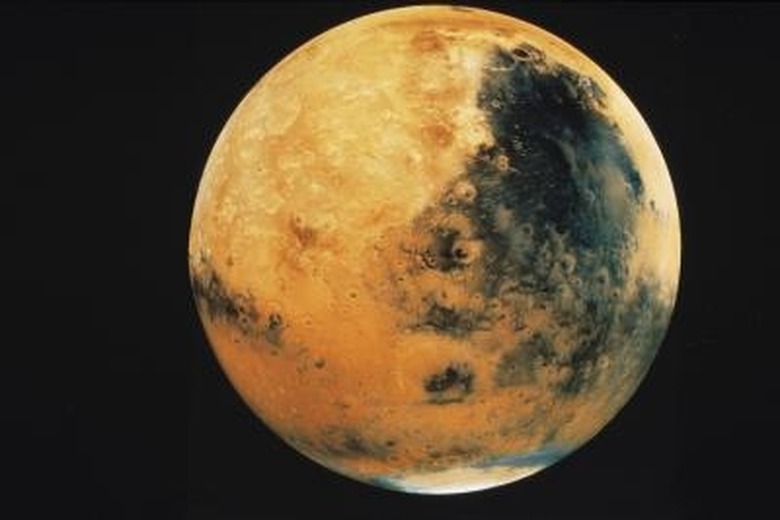What Do Mars & Earth Have In Common?
Scientists gain a greater understanding of Earth by studying the similarities and differences between it and the other terrestrial planets, specifically Mars. Mars is the second closest planet to Earth, besides Venus, averaging 225 million miles apart between the furthest and closest points in its orbit. The greatest similarities between the two planets are in the axis, length of day and the seasons. In other areas, they greatly differ from each other.
Axis
Axis
Both Mars and Earth rotate and revolve on an axis. Earth tilts at 23.5 degrees, while Mars tilts slightly more at 25.2 degrees. Earth orbits at 30 km/s, while Mars moves slower at 24 km/s.
Seasons
Seasons
Both Earth and Mars have four seasons each. During the summer in the southern hemisphere, an annual dust storm occurs which blocks most of the surface from view by satellites. During the fall, in the polar regions, crystals of carbon dioxide form and so much of the atmosphere gets absorbed that atmospheric pressure drops up to 30 percent as seasons transition from fall to winter. Earth's seasons are more versatile and include hurricanes, rain, snow and wind.
Length of Day
Length of Day
The length of a day on Earth is 24 hours and slightly longer on Mars at 24 hours, 37 minutes. A year is 365 days on Earth, while almost double that at 687 "Earth Days" on Mars.
Atmosphere
Atmosphere
The atmosphere of Mars is 95 percent carbon dioxide and .13 percent oxygen and other gases. Earth's atmosphere is more dynamic and composed of 78 percent nitrogen and 21 percent oxygen and other gases.
Surface
Surface
The surface of Earth has land forms including the sea and land with mountains, valleys, craters and volcanoes. Mars also has valleys, craters and volcanoes, but doesn't have the same composition of water Earth does.
Cite This Article
MLA
Rumble, Amanda. "What Do Mars & Earth Have In Common?" sciencing.com, https://www.sciencing.com/mars-earth-common-10034859/. 24 April 2017.
APA
Rumble, Amanda. (2017, April 24). What Do Mars & Earth Have In Common?. sciencing.com. Retrieved from https://www.sciencing.com/mars-earth-common-10034859/
Chicago
Rumble, Amanda. What Do Mars & Earth Have In Common? last modified March 24, 2022. https://www.sciencing.com/mars-earth-common-10034859/
